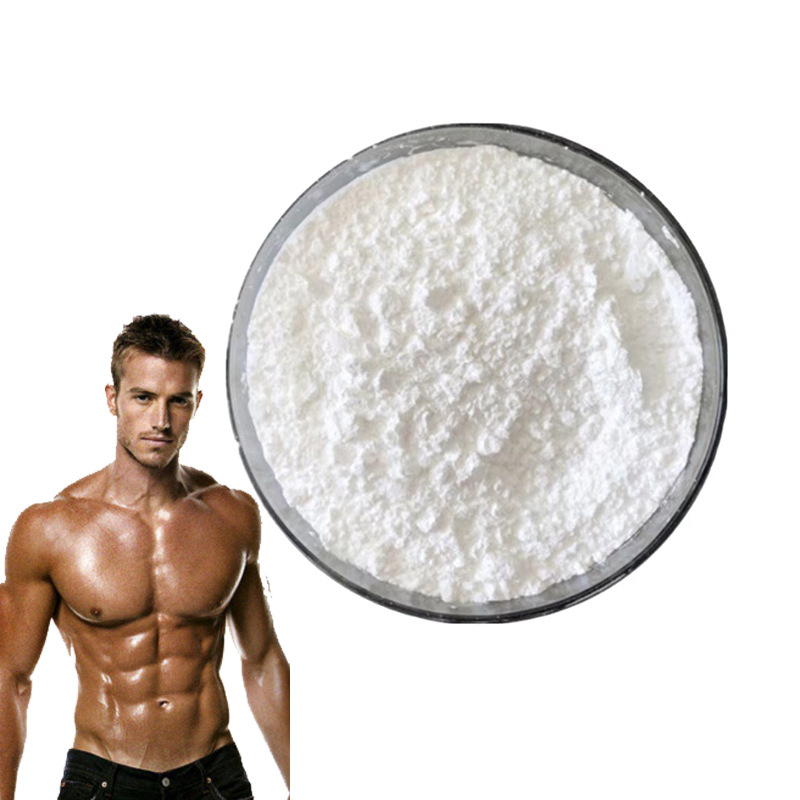Class of Compound:
Peptide
Mechanism of Action:
As an analogue of growth hormone-releasing hormone, tesamorelin binds with the growth hormone-releasing hormone receptors of the anterior pituitary gland, thus stimulating the secretion of growth hormone.
Notable Studies:
· Tesamorelin: a review of its use in the management of HIV-associated lipodystrophy
· Tesamorelin: A hope for ART-induced lipodystrophy
· Growth hormone–releasing hormone effects on brain γ-aminobutyric acid levels in mild cognitive impairment and healthy aging
Also Known As:
Egrifta, Tesamorelin Acetate, LGW5H38VE3, TH9507, UNII-LGW5H38VE3
Research Applications:
· Fat reduction
· Peripheral nerve health
· Cognitive health
Risks:
· Injection site pain
· FDA approval limited to HIV patients
· Prohibited by WADA

What Does Tesamorelin Do?
Tesamorelin is similar to GHRH (also known as growth hormone-releasing factor) in structure and effects, but it is actually a peptide, composed of 44 amino acids as well as a trans-3-hexenoic acid group . The latter helps to make tesamorelin more stable and longer-lasting than natural GHRH.
As an analogue of GHRH, tesamorelin binds to the growth hormone-releasing hormone receptors (GHRHr) located in the anterior pituitary gland, thereby prompting the somatotropic cells therein to synthesize and release growth hormone (GH) in the body .
Growth hormone is a powerful anabolic hormone, one of the most important chemical signals for the body to build and repair tissue. It is involved in many processes, from creating new muscle to repairing torn tissue and even breaking down fat. GH is plentiful in the body during childhood and adolescence, but decreases with age. This process of decline can affect athletic performance, mobility, and the length of time it takes to recover from an injury.
Given the above, a GHRH analogue like tesamorelin can be successfully used to stimulate the production of GH to address a variety of conditions like growth hormone deficiency, fat accumulation, cognitive decline, and nerve injury.
Tesamorelin Benefits | Clinical Trials
As tesamorelin has been approved by the FDA, there has been extensive research on the peptide and we know quite a lot about it. Here is what the research says about how tesamorelin might benefit subjects and how it can be used.
Reduction of adipose tissue: The primary and approved use of tesamorelin is to treat HIV-afflicted individuals who suffer from lipodystrophy, a condition that causes the accumulation of fat in the upper back and around the stomach. This increase in adipose tissue can cause body image issues as well as increase the risk of heart attack and other cardiovascular diseases.
Tesamorelin has been shown to trigger lipolysis (fat loss) in individuals with this condition. In HIV-infected patients with lipodystrophy and excess body fat around the abdomen, tesamorelin was found to significantly decrease subcutaneous adipose tissue (body fat) by 15 percent . In contrast, the control group participants experienced a five percent increase in body fat. In this same study, tesamorelin was also found to improve insulin resistance and cholesterol.
More importantly, patients’ scores on body image improved significantly in the tesamorelin group, with subjects perceiving their bodies as more attractive following treatment.
These results are not isolated, having been confirmed by a review of four randomized controlled trials. The research suggests that tesamorelin is actually four times more effective in reducing adipose tissue (body fat) than all other treatments combined .
Recovery from peripheral nerve damage: Injury, surgery, and even diabetes can cause peripheral nerve damage and result in the loss of motor and sensory function in various parts of the body. Typically, there is very little that can be done about this, as nerve cells are difficult to regenerate.
However, promising research has shown that tesamorelin and other GHRH secretagogues can improve the extent to which nerves can regenerate themselves, with tesamorelin being investigated as one of the more promising treatment options.
Improved cognitive function: There is also research about the role that GHRH analogues, including tesamorelin, may play in improving cognitive function in subjects with mild cognitive impairment.
A large study has found evidence that tesamorelin may increase levels of certain neurotransmitters in the brain that are associated with the prevention and treatment of cognitive decline. More research is needed to confirm these findings.
Is Tesamorelin Safe?
As noted above, the FDA has approved injectable tesamorelin to treat HIV-associated lipodystrophy. To gain that approval, the peptide underwent two Phase 3 clinical trials and was determined by the FDA to meet the requirements of safety and efficacy for the specific purpose of reducing excess abdominal fat in in HIV-infected patients with lipodystrophy.
That said, it falls upon researchers to weigh the risks against the benefits of administering non-prescription tesamorelin for any other purpose, including general weight loss management. Non-prescription tesamorelin should only be handled by a qualified researcher or laboratory professional, and under no circumstances should it be self-administered for a non-research purpose.
Tesamorelin Dosage Calculator
For reference, in the treatment of HIV-associated lipodystrophy, patients are typically directed to subcutaneously inject 2 mg of tesamorelin, at least 90 minutes after eating, preferably before bedtime, in a single injection, a total of five nights per week.
For research purposes, a typical tesamorelin dose is 1 mg per dose, injected subcutaneously late at night, at least 90 minutes after eating. For testing on a first-time tesamorelin subject, it is important to begin with the lowest dose possible and increasing as needed.
Tesamorelin should not be administered indefinitely or continuously—regardless of the research application. It is commonly administered in cycles, whose lengths vary based on the research purpose.
Description
Tesamorelin (usan) consists of the 44 amino acid sequence of human growth hormone releasing factor (GRF), with a 3-hexenoyl group attached to its tyrosine N-terminal residue. It is a new growth hormone releasing factor analogue, which can not only restore normal growth hormone secretion in the body, but also reduce the increased visceral adipose tissue (VAT), improve blood lipid abnormalities and quality of life, and maintain glucose homeostasis in the body.















